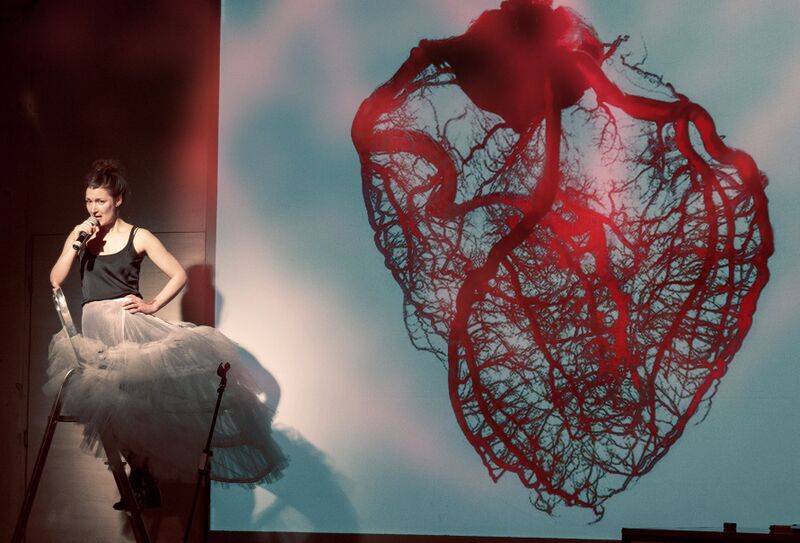What becomes of the brokenhearted? They get over it, mostly. I know, I know – it hurts, there will never be another… But there usually is. We live, usually.
But oh, the power of love! I Gave Him an Orchid circles around the story of Sarah Henley, who in 1885 attempts suicide by throwing herself off a bridge. She lives – saved by her billowing crinoline skirts that parachute her down into the mud below. Her broken heart heals (as do her broken ribs) and she finds another love, marries and has two children, and lives until she’s well into her eighties, a content grandmother of five. Sarah’s story is told in words, in stylised gestures and slo-mo choreography, and with puppet-esque manipulation of a stiff-legged Barbie doll.
Weaving through and around this story of survival from the love wars is a contemporary tale (or tales, more accurately) of sexual love. The lone female performer uses every trick in the total theatre book in the telling of her tales. Lists and litanies? Check. There’s a lot of lists. One that’s a bit like an updated version of ’Fifty Ways to Leave your Lover’ – a voicemail message, a carefully worded email, a text to your mobile. Lists of idioms and sayings with the word ‘heart’ in: wear your heart on your sleeve; heart-to-heart; heart in your mouth etc. ’I love that you…’ is built around responses that audience members make on paper as they enter the room. ‘I love that you put cuddly toys in the bed when you make it’ ‘I love that you dance so beautifully’ ‘ I love that you bought rubber ducks on our wedding day’. Early in the piece, there’s a litany of lost loves as we’re introduced to a whole host of ex-lovers evoked through limericks: Dan (she’s his biggest fan), Ace who played bass and hit her in the face, Rick with the wondrous dick, and so forth.
Everything including the kitchen sink object play? Check. The stage boasts a stepladder, a dummy’s head, a table on which things are chopped and whizzed in a mixer, aforementioned Barbie doll, and fairy lights that are used as a hangman’s noose (second time within 24 hours that I’ve seen a young woman performer use this image on stage at Summerhall – Project HaHa has a similar moment).
Ironic use of lounge music and kitsch pop classics? Check. The roll-call here includes Burt Bacharach (What the World Needs Now is Love Sweet Love, and This Guy’s in Love), Shirley Bassey (Love Story), and Jane Birkin (Je T’Aime – of course). There’s also a large screen at the rear of the stage, used now and again to project stills of illustrations of the heart, or photos of loving couples kissing.
Our lone performer works her socks off in this her opening show of the Fringe, with a small but appreciative audience. For the most part, she holds the space well – even though I’m not overly keen on a lot of the content of the piece. A mock-wedding speech with the theme ‘it should have been me’ is too bitchy for my taste, and I’m not too keen on the audience participation elements – there are other companies who’ve done the ‘invite a male audience up on stage and mess with him’ number a lot better.
But the wordplay I like, and it’s good to see verbatim material used in an interesting way. A scene towards the end when she becomes Sarah Henley, standing on the table in a crinoline skirt, her face obscured by the fabric and by her flowing hair, is one of a number of beautiful visual images conjured.
In summary: I’m not bowled over, but I’m interested. There’s a lot to like and admire – a one-person show this busy and complex is a tough one to pull off, and to give the performer (unnamed in the programme!) her due, she is in control of the space, and delivers her material with zest and panache.

